AI Does It Best
“If we can’t design a chair, what tells us we can design organizations, laws, educational curricula, health systems?”—Alexandros Marinos
A few years ago, I discovered the Deep Dream Generator, with which I created images like these:
Since then, AI capabilities have exploded. Here are 21 ways AI is blowing our minds today:
I’m trying something new today, a cross-promotion with Heyday, a tool to bring back what you’ve already looked at in other contexts. They will be sending this article to their newsletter subscribers. Let me know what you think.
This is what my tabs bar looks like on Chrome:
I have four such Chrome windows open. And one in Safari. Each looks a bit like this. My computer is slow.
Heyday promises to put forward the past pages you’ve visited in other contexts. For example, in a search:
They also do this while you’re reading something else.
I haven’t tried it yet—or any other tab management tool. I get a bit nervous about relinquishing my tabs. Do any of you use Heyday? Do you like it? Any other tool you use to manage your tabs? I need a solution. LMK in the comments.
1. Create images of anything
Want to create images based on… anything you can come up with? What about an armchair in the shape of an avocado?
A snail made of a harp?
Or even illustrations? Like a baby daikon radish in a tutu walking a dog?
AI can generate any landscape you can imagine.
It can take a bunch of pictures and convert them into a 3D model, which you can then use to create any video
The power of this is mind-boggling. We can recreate history based on a few pictures.
Imagine using this to create animated movies based on just a few images.
Imagine using this to animate old pictures.
Imagine using this to animate your loved ones back to life.
Talking about historic images: AI can restore old pictures to perfection.
2. Restoration
It can colorize old pictures.
And when all these pieces come together, magic happens
3. More detail
It can enlarge pictures without losing quality

But with AI, you’re not limited to improving the past. You can create the present. Like people.
4. Create faces
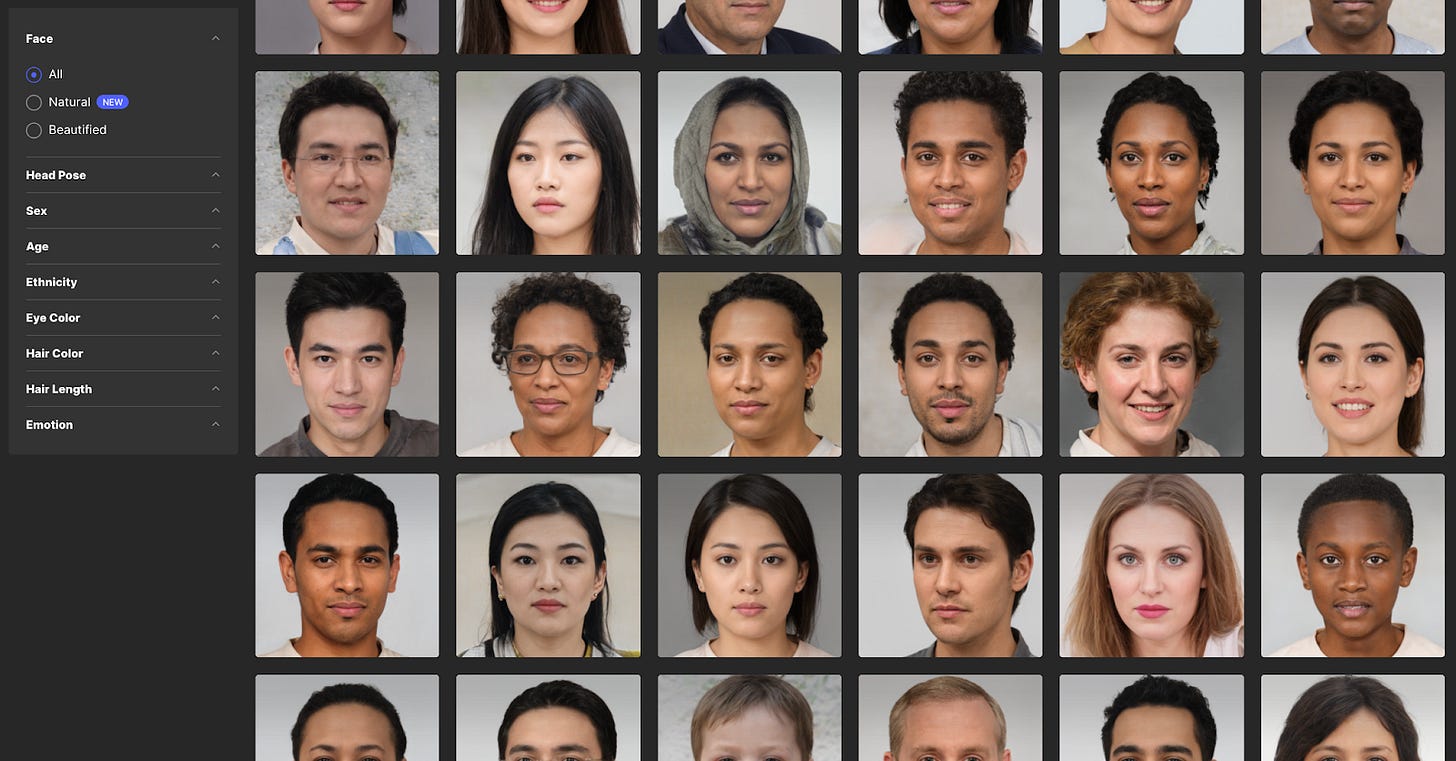
Want to create new faces not out of the blue, but based on an existing one?

Wanna create 3D characters that move like you?
5. Create characters

Or simple 2D cartoons:
Or you want to go in the exact opposite direction and create real-looking humans?


Miko has nearly 1 million followers on Twitch. The human behind it set up a system to impersonate an avatar that people could interact with.
This is really the beginning.
But maybe you want to create an avatar from scratch that looks really, really human?
6. Create human-like characters
I highly encourage you to watch the entire video here
(or if you want to go deeper, go here)
Do you want the 3D characters to be… you?

7. Clone voice
It’s not just image. AI can clone any voice.
Then, it can take that voice and make it say whatever it wants, in whatever intonation it wants.
8. Speak in any language
And maybe you want to have yourself speaking other languages? Like, 40 of them with tools like Synthesia?
This can be handy for mass-marketing through video.
Or you want to understand another language on the spot?
Or translate yourself to talk with people in other languages in real time? Google does that well.
9. Voice assistants
Since we’re back to Google, you might already use their assistant (or Apple’s Siri). If you haven’t, you might not realize how advanced they’ve become.
10. Video marketing
AI can create a personalized video message for customers, so that it looks like a human actually recorded a video speaking to them.
Maybe you don’t want to create digital voices, but physical things?
11. Shoes
Through Generative Design, AI can help design things humans would never imagine, from personalized shoe soles:
Or in fashion.
12. Fashion

“Is this televangelism for sacred geometry?”—@machubox
But the optimization is not just for show. It can also optimize for different constraints, such as in architecture.
13. Architecture
AI is starting to permeate architecture through generative design.
Apparently, concert halls are perfect for AI. I assume their constraints are quite unique and hard, given their acoustic needs.
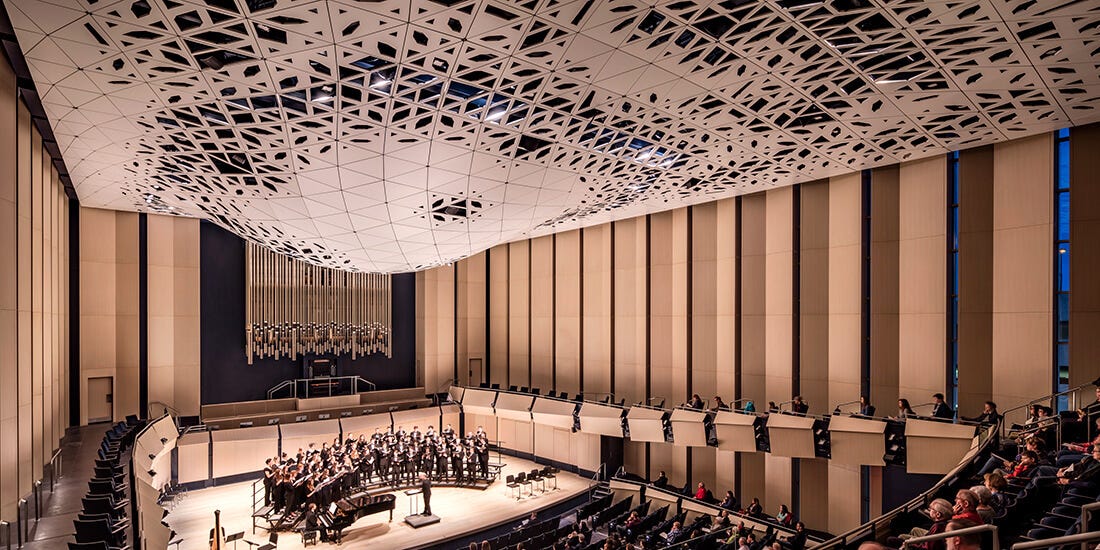

Not just the space, but even the surfaces are micro-optimized for acoustics:
You might not want to design just something pretty or acoustically interesting, but optimizing for space and human movement.
14. Industrial design
By telling the AI what you want to optimize for, it can automatically figure out options that achieve your goals.

It can come up with small-looking changes in design that double efficiency.

And if you think increasing efficiency while reducing weight isn’t a big deal, think of satellites, and how shaving a few grams and increasing efficiency by a few percentage points can be the difference between success and failure.
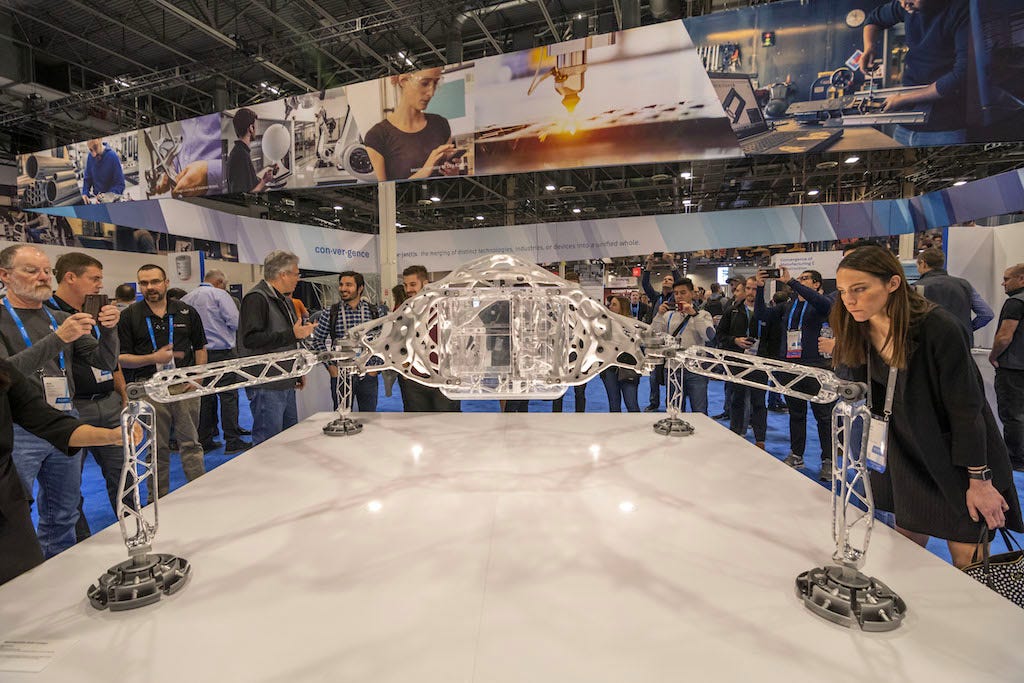
Back to Earth.

Even basic things we’ve known forever can be substantially optimized.
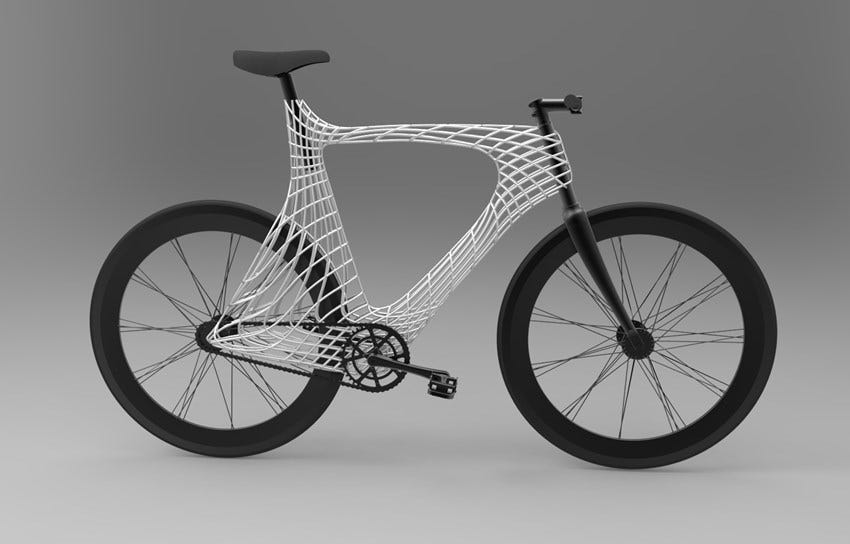
These are not optimized for mechanic properties, but for heat dissipation properties:
But we can also optimize harder problems that haven’t received as much attention.

AI optimizations aren’t limited to final products. How we manufacture, how we work, is also being completely reinvented.
The way we redesign consumer products, we also redesign industrial products, like when we combine 20 pieces into one.
Or when we optimize the paths of millions of products in a warehouse.
15. Industrial processes

Until a few months ago, we knew the shape of fewer than 20% of all proteins in the body. Now, thanks to Google’s AlphaFold, we can predict how 98% of proteins will fold.
16. Molecule interpretation
This is crucial because the shape of a molecule determines its actions. If you know the shape, it’s much easier to know how it works.
This is already being used to reduce by 20x the investment needed for some biotech processes, such as discovering cancer drugs:
Other work process optimization includes time shift optimization, for example, where a company uses AI to optimize shift management for its employees (it’s a surprisingly hard problem to solve).
Visual design can also help in less momentous tasks.
17. Visual design
It can create beautiful presentations for you.
This is not the only content it can do better than you. It can write better than you.
18. Writing
You’ve probably experienced autocomplete services in your emails or Google Docs. This is AI helping you to write. Or you might know about Grammarly, which corrects your emails and essays and is valued at $13B. But they write much more than that.
AIs already write most minor financial and sports news articles. But their ability to write well keeps improving.
AI can create better marketing copy than you, like Copy.ai.
It can even give you ideas for blog posts, maybe even write them for you.

19. Games
It took over a century from the invention of the first computer (“artificial intelligence”?) to the moment a computer beat a human in chess. Now, they routinely do, even to humans paired with computers. That was a shock back then, because some thought machines would never beat humans at complex thinking.
When machines first beat humans in chess, it was discovered that they just processed more combinations. This is not the only reason they beat humans anymore. They’re also more creative.
As a result, more and more “complex human games” are being conquered by machines, at a faster and faster pace. Poker, Go, Starcraft 2, DotA 2…
Back in 2017, experts were asked when AI would beat humans at human tasks. Their predictions are in gray (the line represents the range, the dot the average of their predictions). The reality is portrayed as red dots.
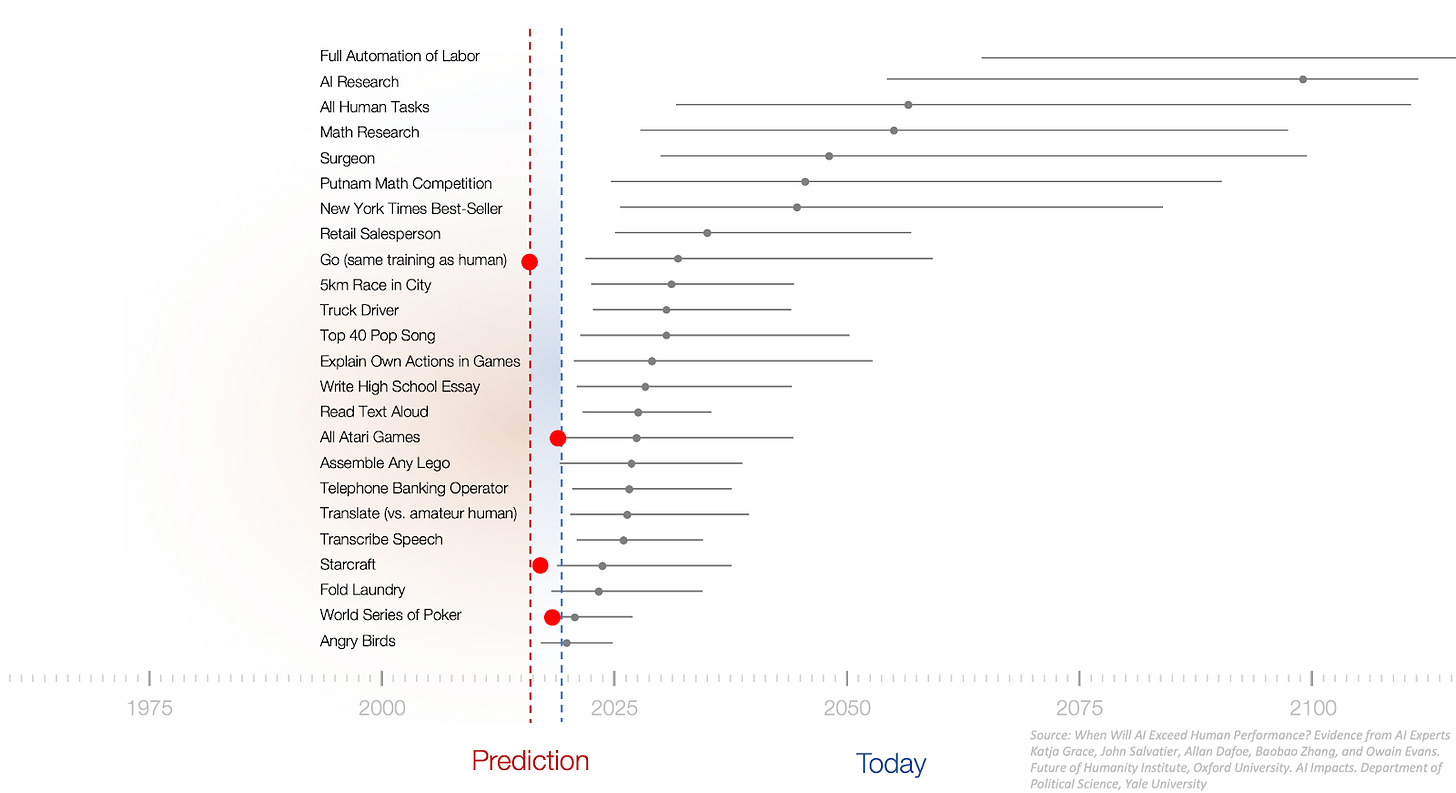
Every single famous game was conquered by AI much faster than was expected by even the most aggressive AI expert!
Some of these games, like Starcraft 2, require some very advance planning, and seamless strategic and tactical execution. If machines can do this better than humans now, when will they be able to beat humans at more complex creative stuff? Like coding?
20. Coding
Github Copilot analyzes entire functions and gives feedback to developers.It even suggests pieces of code.

With the amount of code that Github has, they can train AI to eventually do anything you can imagine. Right now, it can help a programmer out (which is super useful). But how long before they can be replaced?
Today, some parts of coding can already be replaced. Look at this video (starting at 26m49s):
OpenAI is the company behind GPT-3, responsible for many of the impressive text creations we’re seeing in this article. But code is also text. Surprisingly, OpenAI is starting to figure out how to write code with AI. Many no-code solutions are powered by this.
Obviously, this is pretty basic code. My guess is it will take a long time to automate complex code. But what if the 20% easiest tasks account for 80% of the demand? Maybe all of us will be able to “code” soon. What if that 80% of demand for code today represents 80% of employment in engineering?
Or maybe this is not what will happen. Instead, maybe making code accessible to all will expand what we can do so much that the demand for more complex code will explode, the same way as the appearance of excel didn’t eliminate accountants, but rather supported their flourishing?
We can already see this in extended reality.
21. Extended Reality
Everything related to virtual or augmented reality needs AI. Not every case can be predicted, so AIs are used for many tasks.
Worlds like this are impossible to create with human thought alone.

If this is not a world you look forward to, realize you won’t need your AR glasses on all the time. You might just put them on in an art gallery:
22. Physical work automation
AIs won’t just replace or enhance humans working with their brains, though. As they get better, they will also conquer the world of atoms.


And as you know if you read my posts, this is concerning, because restaurants, fast food, and the like are the biggest source of employment in countries like the US.

When people say that automation will eliminate jobs, what they really mean is “automation powered by AI”. This debate, opened nearly a decade ago, is still heated between those who fear a jobs apocalypse and those who don’t worry.
So far, I’m on the worrying side, because I fear the debate is missing the biggest factors:
There will be job creation and job destruction, but the speed of job destruction will be faster than that of job creation.
Those who say “this happened in the past, like during the industrial revolution, and look at us now, we’re good” don’t understand what actually happened during the industrial revolution.
I will cover these topics in upcoming articles on automation.
I’m sure I’ve missed many other examples of how AI beats humans and does amazing things. What other examples do you know of? Leave them in the comments!


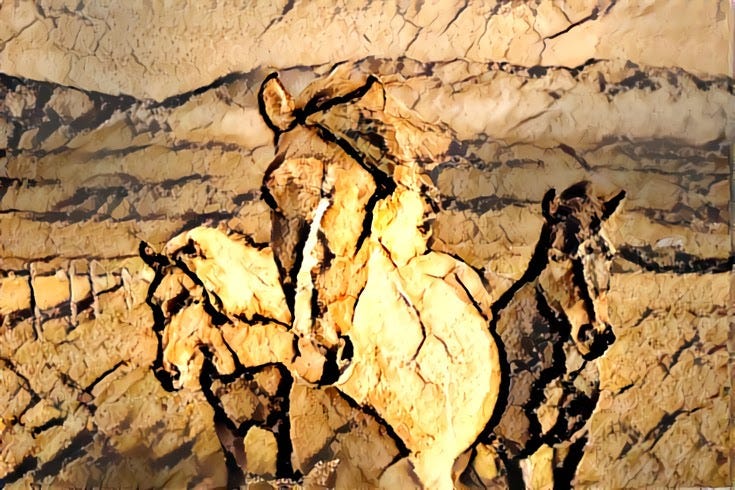



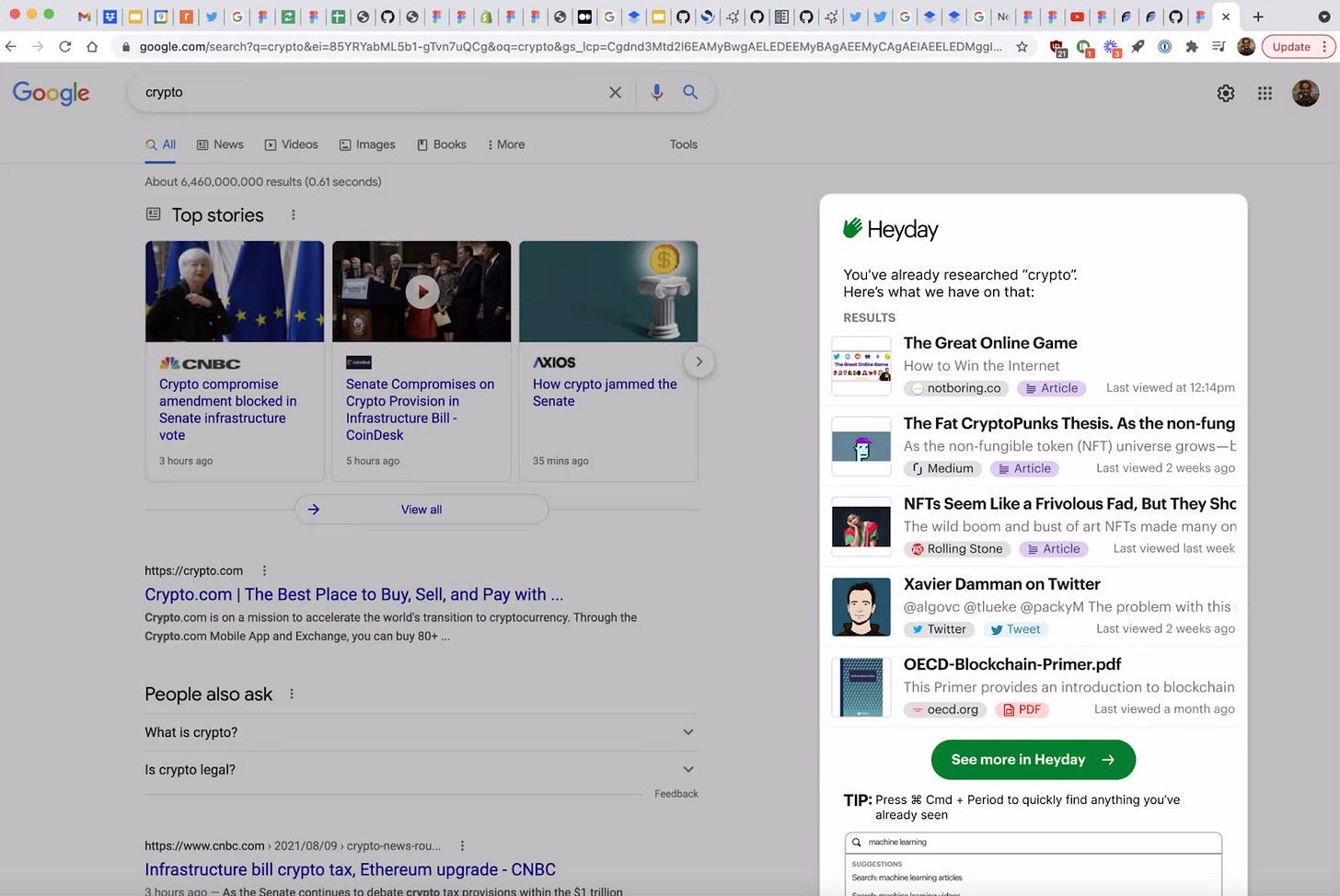















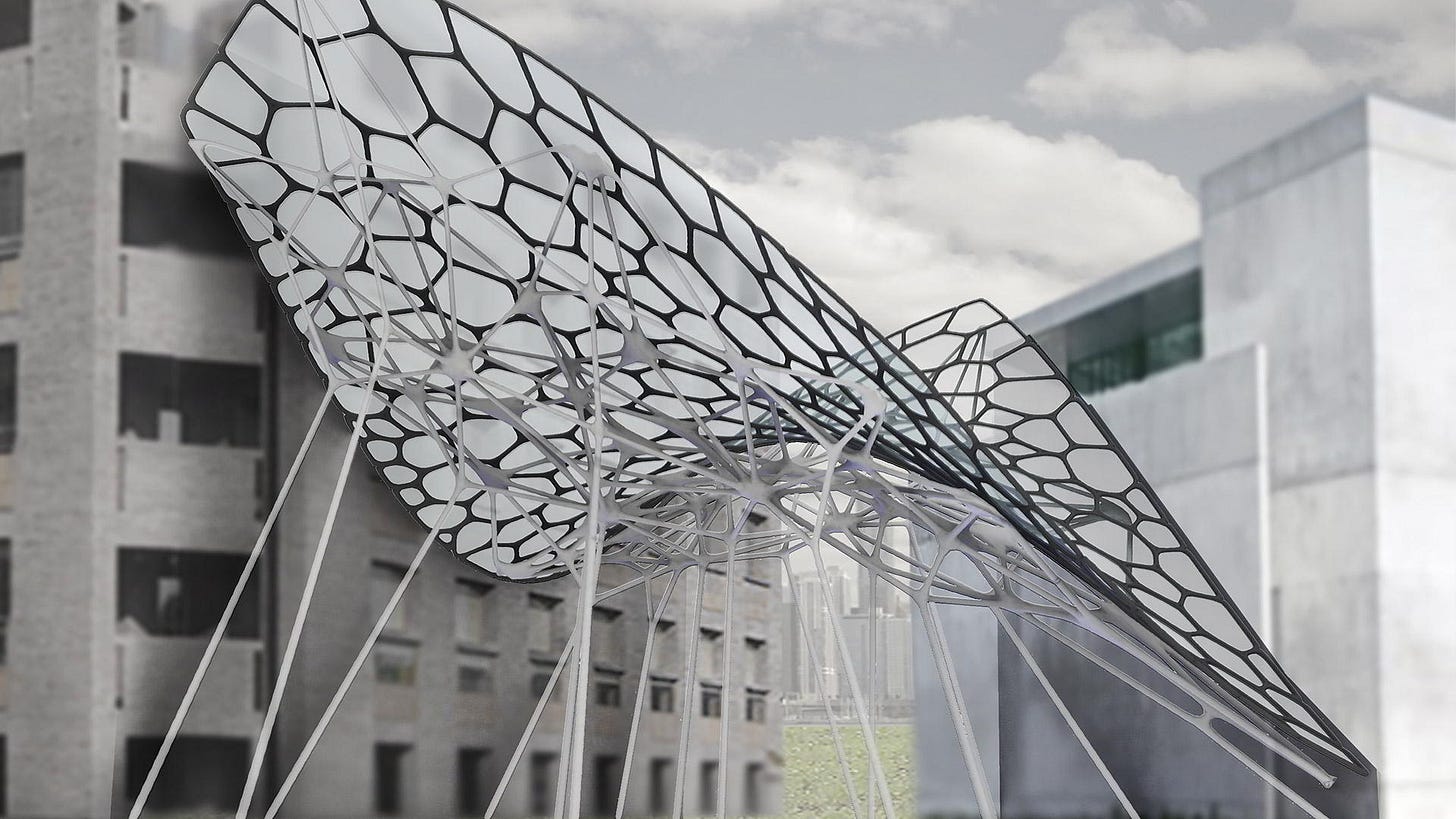
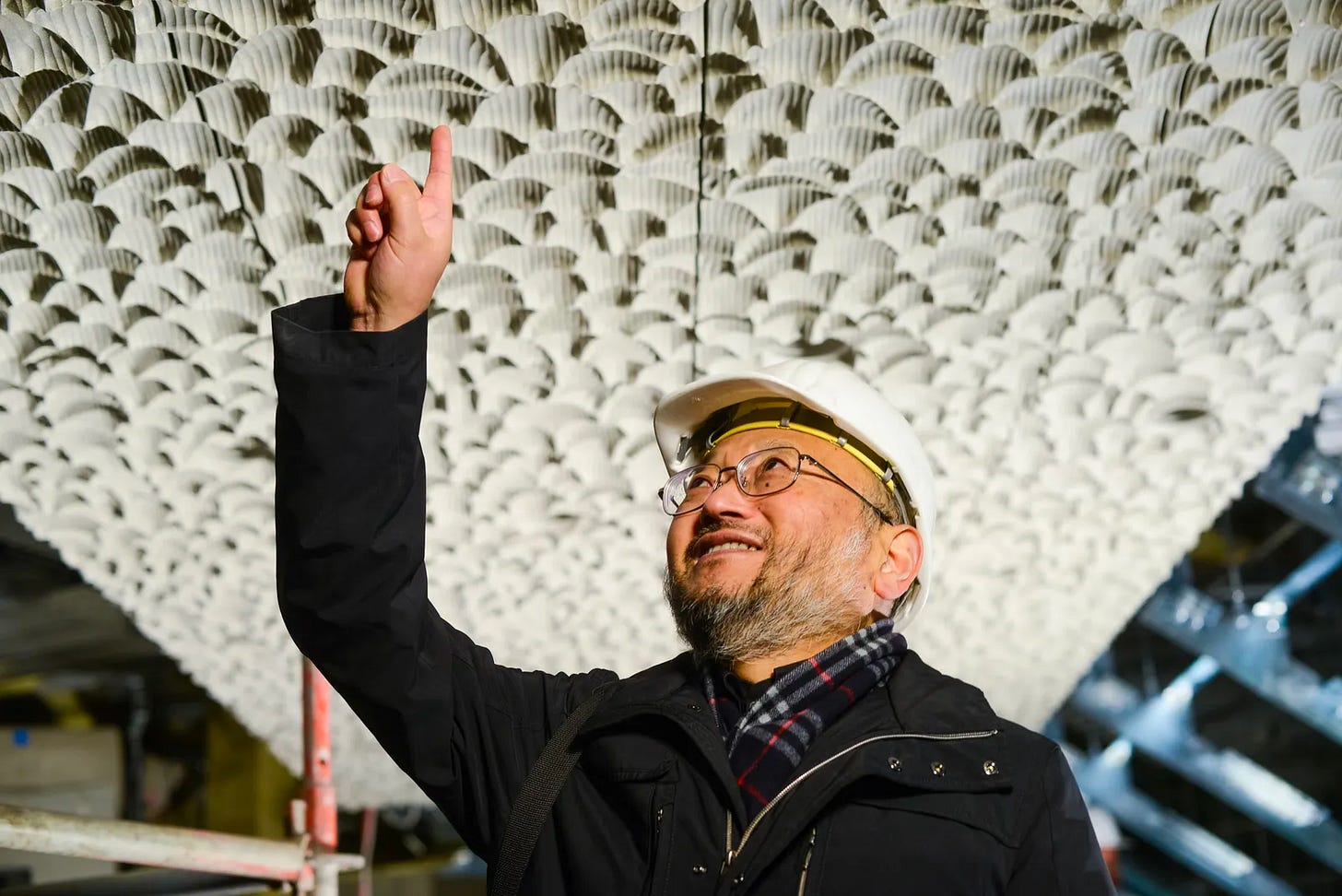

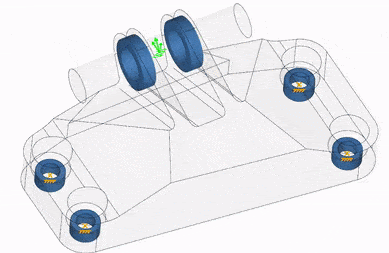
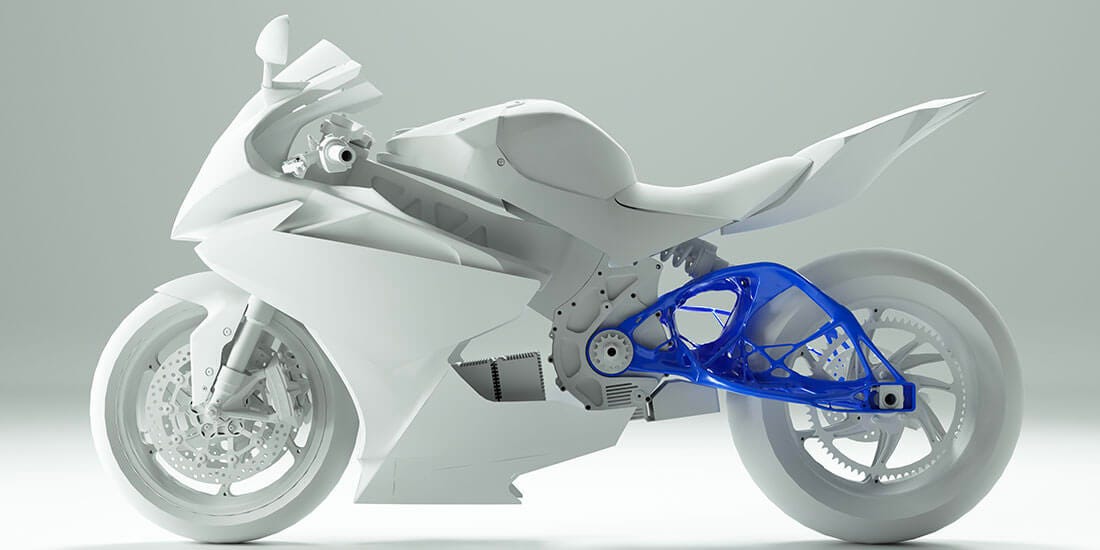
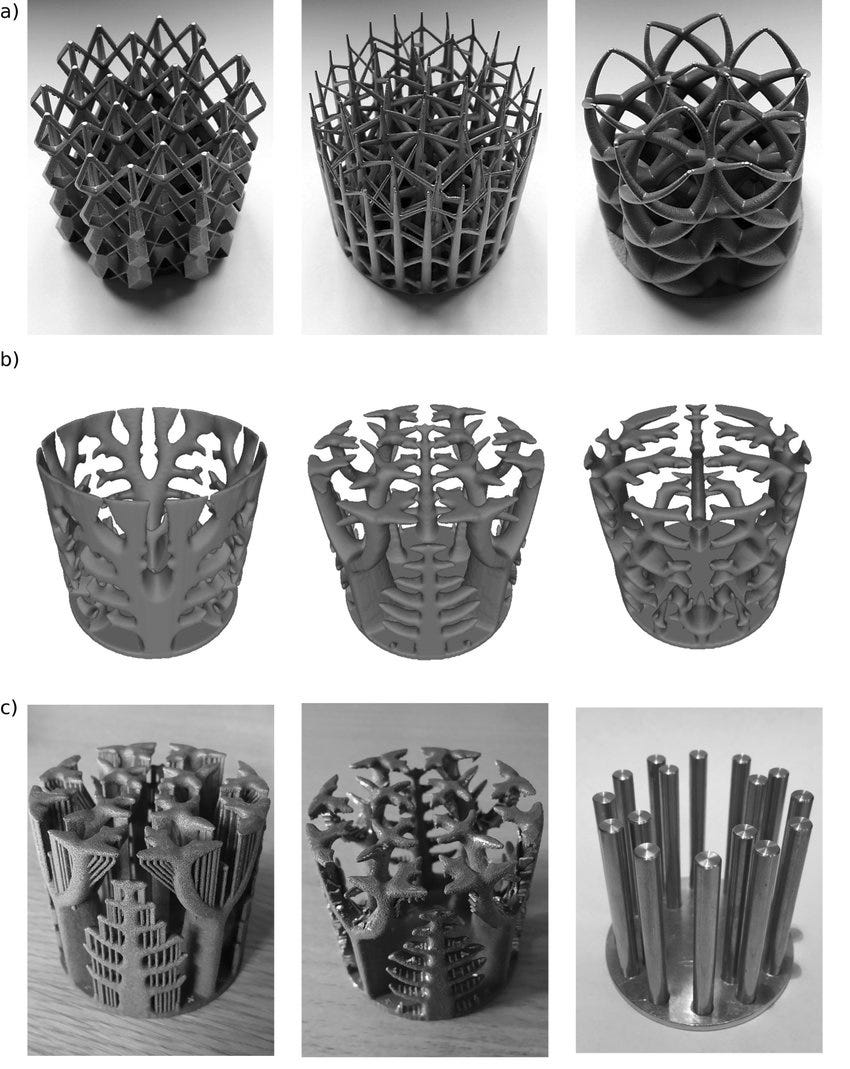

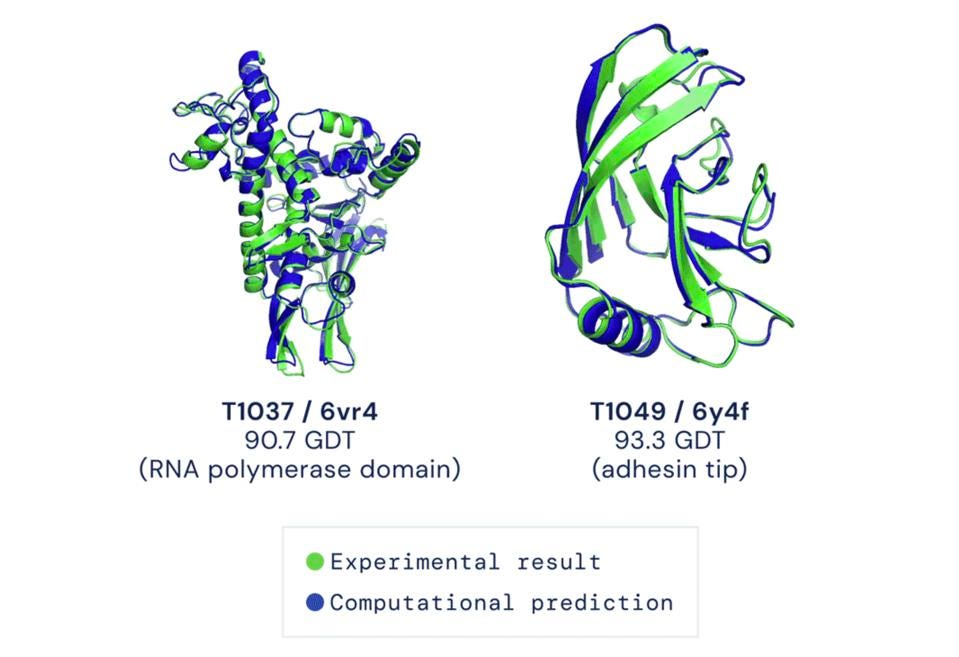


Looking at two types of functions: creation and maintenance, it seems that most of the AI effort is focused on the former. But we humans, as a group, like creating and are bored with maintaining. A computer programmer likes to write programs but not to look for bugs. A cyber security professional likes to design new countermeasures but not to maintain patches. An author likes to write drafts of his books but not to endlessly edit them.
Grammarly does some editing, but it's specific and small scale. **As far as I know** you can't give Grammarly a draft of a book and ask it to check for inconsistencies in characters, time frames, clues, etc. You can't ask it to propose alternative twists of the plot.
I hope AI developers will consider automation of boring tasks.
18. Games, "Back in 2017"… reads as if there should be a graph there.